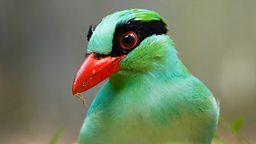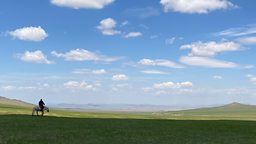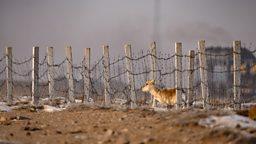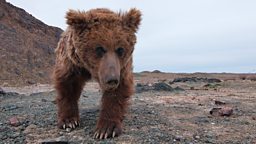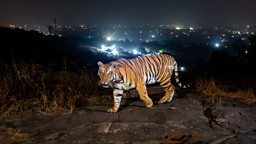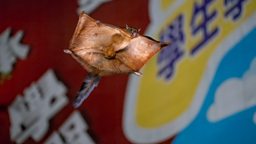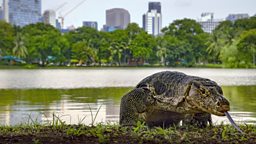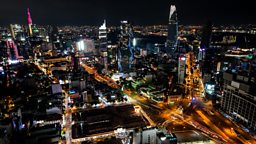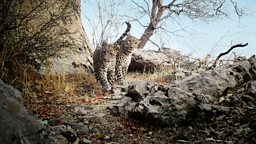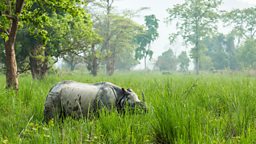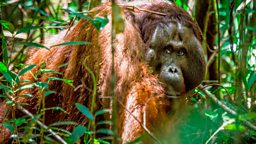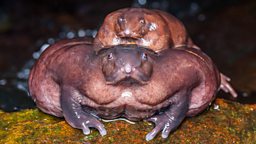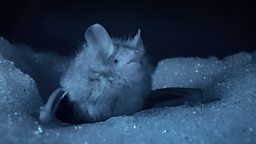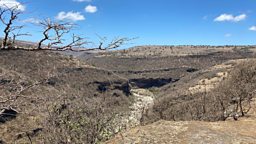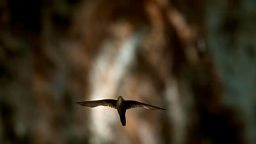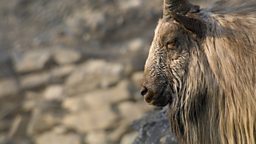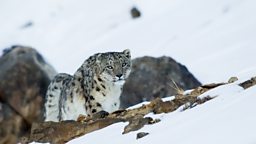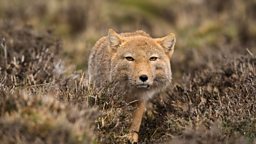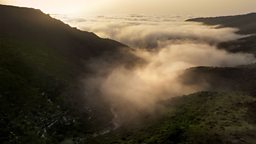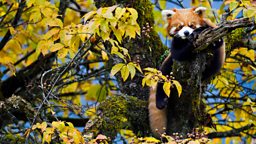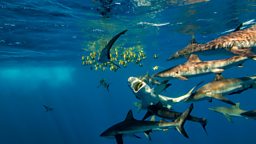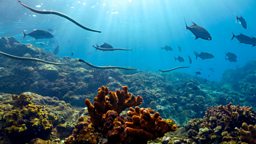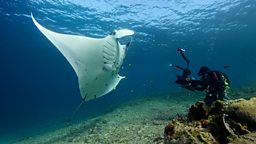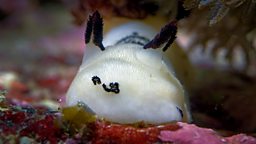Filming the Bornean elephant: a tale of two forests
By Assistant Producer Ed Anderson, and camera crew Felicity Flashman and Ben Harris
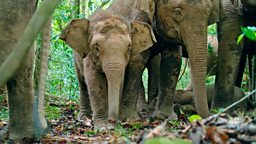
Bornean elephants are purportedly the smallest elephants in the world. Their calves are really diminutive: picture an animal the size of a compact fridge. They have hairy ears and an Eeyore-like tail that reaches the ground. Many might consider them cute, and they’re certainly iconic. The Tangled Worlds crew travelled to Malaysia to film their story.
...the remaining rainforest on the banks of the river is only two trees deep.
Known for its biodiversity, Borneo’s Kinabatangan River is the second-longest river in Malaysia. It meanders through rainforest, limestone caves, swamps, and salty mangroves before reaching the Sulu Sea in north-eastern Sabah. Bornean elephants have been travelling along this forest river for over ten thousand years. Yet over the past two decades, palm oil plantations have been eating into the forest on either side of the Kinabatangan, reducing habitat and food resources for its inhabitants. Elephant populations have shrunk by fifty percent in the last three generations. In some places, the remaining rainforest on the banks of the river is only two trees deep.
Our aim was to capture a sequence showing how Bornean elephants have adapted to live in this altered environment. Filming elephants on foot, no matter how small they are, is always a challenging endeavour. Fortunately, we’d assembled a team who had been filming this group of elephants for several years. Cinematographer Will-Foster Grundy and expert guides Osman and Franco always seeming to know where the herd would turn up next.

With Osman’s guidance, we soon found ourselves only a few metres from a Bornean elephant family. We were all silent. There’s something almost timeless about being near wild elephants. It’s as though the world around you slows, the noise of the forest dimming to a quiet hum. With our guides at our side, we felt little threat, little fear. It was quite breathtaking.
...we soon found ourselves only a few metres from a Bornean elephant family.
Some of the animals still dwarfed us and we had been reminded that they are of course dangerous. But over the next hour their individual characters started to shine through: mothers doting on their young, teenagers show off by feigning stifled charges at us, and the alpha male, named Elvis because of the crop of dark hair on top of his head, towered over his family but stood at the back of the group, nonchalantly looking the other way.
In addition to filming in the forest, we also followed the elephants when they crossed the Kinabatangan. Filming large groups of elephants moving through deep, crocodile-infested, fast-flowing water is tricky. The river crossings required a two-pronged approach. Will had a large stabilised camera gimbal rigged to his boat with a long lens to cover the action at eye-level. Meanwhile, Ben Harris and Ed Anderson would hang back to cover the action from the air with a drone.
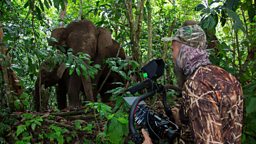
These elephants are hemmed in, with fewer and fewer places to roam. To find enough sustenance they are constantly on the move. This is why elephants venture into palm plantations. But this can be risky: most plantation owners will chase elephants – sometimes aggressively – because of the damage they can do to young crops.
To find enough sustenance they are constantly on the move.
We wanted to film the elephants experiencing some of the hurdles represented by the plantations, and an opportunity came when we got word that the herd were heading towards an electric fence. We quickly headed into the forest towards where we thought the herd might try to break through the fence. Nervously, we waited.
Minutes slowly turned to hours, and then the sun was low in the sky and the light began to fade. One thing we didn’t want was a return journey on the winding, crocodile-laden tributaries of the Kinabatangan in the dead of night. Especially when the elephants could well be in the water alongside us in the darkness.
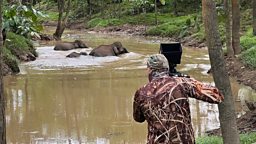
As discussed packing up, grumbles in the distance focused our attention. Slowly the sounds built, a cacophony of trumpets, heavy footsteps and breaking branches as over ninety elephants, young and old, marched towards us. We had an exit plan: head through the trees, across a ditch and into a spot the elephants couldn’t reach, but it was a nerve-wracking experience to have so many animals heading towards us with purpose.
...it was a strange feeling for us to arrive at a palm plantation where elephants are tolerated...
When the bull male, Pondan, finally reached the fence, we were amazed by the precise dexterity that he displayed, slowly pushing over a fence post to not only create a gap, but also to snap the electrified wires. Did he know what he was doing? We’ll never know, but it was a remarkable thing to witness.
Later in the shoot, it was a strange feeling for us to arrive at a palm plantation where elephants are tolerated, even encouraged. Here the plantation owners recognise that elephants don’t do any significant damage to mature palm trees (though young crops must be protected from them) and can even be beneficial by recycling the palm wood chippings. Tourists are also invited to come and view the elephants from a respectful distance.

As a film crew, thinking about the stress that some elephants are experiencing, then seeing a population behaving naturally – albeit in an environment they are not traditionally used to – was eye-opening.
...it shows how humans and wildlife can find ways of coexisting more harmoniously.
This new world order, where the normal narrative is being turned on its head, was making our heads spin. Elephants seeming stressed in their natural forest environment, but relaxed in palm oil plantations. It was giving us some hope for the future: perhaps it shows how humans and wildlife can find ways of coexisting more harmoniously.
It was a privilege to be able to film so close to these majestic animals in two very different environments.

